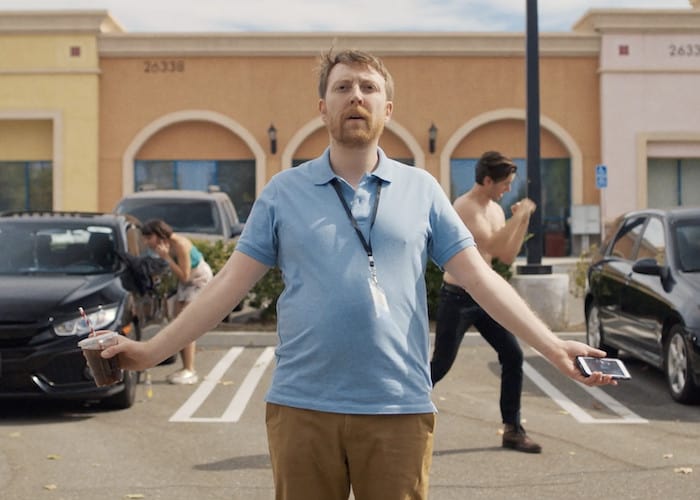
Welcome to The Queue — your daily distraction of curated video content sourced from across the web.
A group of coworkers finds a dog trapped in a car on a hot summer day. Chaos ensues. And what better way to capture chaos than a single-take?
What shall we call it? The Anxiety Law of Editing? The Michael Bay Bell Curve? We all know that fast cuts can leave you a nervous wreck. There’s a reason Mad Max: Fury Road feels like a heart attack: it has an average shot time of 2.1 seconds. But, arguably, the same holds true for the opposite approach. Single takes are well-suited to capturing the feeling of everything spiraling out of control and slow diving into cascading catastrophe. No cues to breathe and suddenly you’re sweating buckets and fidgeting like it’s an Olympic sport. Which is, in truth, how public confrontations feel — especially the ones where your coworkers are watching.
Hot Dog‘s scale may be considerably smaller than something like 1917, but its cinematic language isn’t all that different. The short film’s comedic chaos takes place in one uninterrupted shot, free from digitally manipulated merges of separate takes. The result is something that truly captures the feeling of public disaster gone south, only a lot funnier.
You can watch Hot Dog here:
Who made this?
Patrick Muhlberger is a writer and director based in Los Angeles whose work has been featured on Vimeo Staff Picks, Gizmodo/io9, and within the festival circuit. You can browse Muhlberger’s video content on his Vimeo page and you can find Muhlberger’s official website here.
More Videos Like This
- POP MUSIC, Muhlberger’s award-winning short about love, loss, dancing, swords, and Justin Timberlake
- Karsten Runquist’s guide to one-shot movies
- Russian Ark is a fantastic, wildly ambitious one-take film whose making-of documentary, In One Breath, is an essential watch even if you don’t like guided existentially nightmarish tours through the Hermitage
- Nursery Rhymes, a surreal, award-winning short film by Tom Noakes uses the “one take” to devastating effect
- Kyle Kallgren’s essay “Nostalghia Critique” digs into how YouTube’s content ID system limits video essayists, and what that means specifically for long takes. It is also a sneaky subtweet of this whole mess.
- The extended behind-the-scenes featurette on how they shot 1917‘s long take
Related Topics: Hot Dog, Short Films, The Queue

